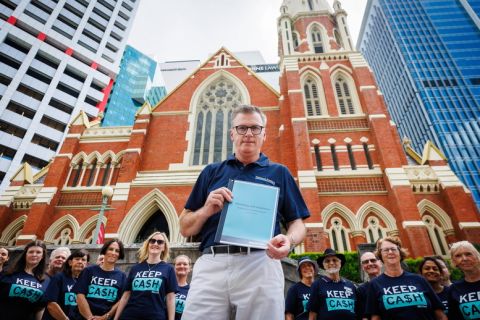Is it time to cut the fuel excise?
Fuel prices are surging again – so should government ease cost-of-living and cut the excise? Have your say in our poll.

Remember the hit TV show Seinfeld, and the episode where Kramer and a car salesman go on a Thelma and Lousie-style drive to see how far a car can go on empty?
Well, many of you might now have a nervous twitch when the empty light comes on and you drive past a service station as petrol prices push past $2 a litre.
Long gone are the days when you couldn’t care less when and where you filled up. Sure, no one ever wants to be robbed in broad daylight at the high end of the fuel price cycle, but the difference now is that it can cost well over $100 to fill the tank of a small car and more than $200 for something larger.
It’s difficult to believe but only 20 years ago, the average price per litre of unleaded petrol (ULP) was 87.3 cents.
As the graph below shows, petrol prices have increased faster than the consumer price index (CPI) over the past 10 years. This doesn’t even include 2023.
The fuel excise is a tax levied by the Federal Government on petrol and diesel bought at the bowser. Motorists currently pay 48.8 cents in excise for every litre of fuel they purchase.
The fuel excise is one of the oldest taxes in Australia, applying since Federation in 1901. According to the Parliamentary Budget Office, fuel excise was once linked to road funding but this link is less strong in modern times:
“For some of that time there has been a link between the amount of excise raised and road funding. The formal link to road funding most recently ceased in 1992. Since then, fuel tax has been a general revenue-raising tax with only a minor link with the Australian Government’s overall level of road funding.”
What many people do not know is that fuel excise is indexed biannually, linked to changes in the CPI. Indexation of the fuel excise was first introduced in 1983, abolished in 2001 and then reintroduced in 2014.
It is likely that excise indexation exacerbates the inflationary impact of increasing oil prices.
In 2022, the Coalition Government temporarily halved the fuel excise, providing a 22 cent per litre cut to the petrol over a period of six months as part of a broader cost of living pre-election package.
Opposition Leader Peter Dutton has again put an excise cut on the agenda. Speaking in an interview on Sky News recently, he was asked if the Coalition would support a cut to the fuel excise, amid warnings that record petrol prices could rise further as the Israel-Hamas war escalated.
“There can be temporary relief through a reduction,” Mr Dutton replied.
While conceding that the measure was costly – it cost an estimated $3 billion – the Opposition Leader said there are “periods where [a cut to the excise] is effective”.
The Federal Government has so far ruled out temporary relief through an excise cut at the fuel pump.
“We’ll contemplate what measures are necessary in our economy, consistent with our really strict approach to fiscal discipline, but it’s not something that we’re doing,” Treasurer Jim Chalmers recently told reporters.
The rising cost of fuel doesn’t just impact on the cost of getting around, it also adds to the cost of transporting goods and services throughout Australia. In this regard, the high cost of fuel is undoubtedly impacting on overall inflation.
With the government having little control over oil prices, reducing the fuel excise when fuel prices are high could be a relatively simple (but costly) way to provide a degree of cost-of-living relief to all Australians.
The options open to the Federal Government are to temporarily reduce the fuel excise as was done in 2022, provide a more modest but permanent reduction in the excise, and/or consider removing indexation to ensure fuel price rises are muted in the future.




